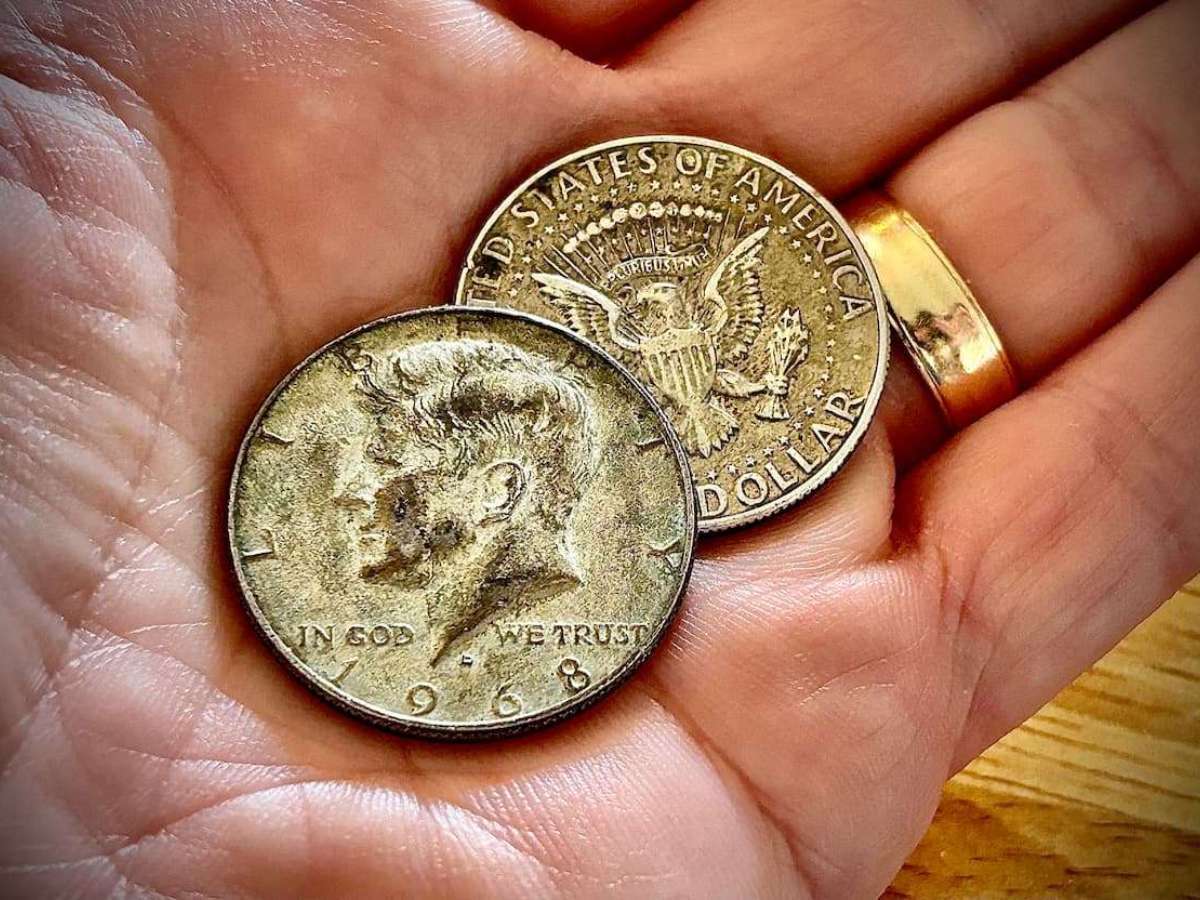Did you come across a Lincoln penny with no mint letter stamp (or mint mark) on it?
Want to know if it’s worth more than face value?

In some cases, these pennies with no mint mark are worth a lot of money.
Confused?
Don’t worry… I’m going to clearly explain how much no mintmark Lincoln pennies are worth today.
By the end of this article, you’ll understand exactly what it means when a penny does not have a mint mark underneath the date on the obverse (“heads side”) of the coin!
About Those No Mintmark Pennies…
I feel compelled to share the details about no mintmark pennies because I receive so many questions about them.
There are all kinds of coins with no mint letter stamps on them. But pennies get a lot of attention because there are so many of them floating around in circulation — and there are LOTS of pennies with no mint mark on them.
Plus… two of the most valuable U.S. pennies are the 1922 penny with no “D” mintmark (which tells collectors that the coin was struck at the Denver Mint) and 1990 with no “S” penny (an error variety involving some proof pennies made at the San Francisco Mint).
With the popular 1922 plain no mintmark penny and the 1990 no-S proof penny being two of the rarest and most valuable coins around, it makes total sense why so many people think their pennies with no mint letter are rare errors worth money!
So, why are there so many pennies with no mintmark?
For the first several decades of its existence, the United States Mint didn’t place any mintmarks on its coins — because they all came from the same place: the Philadelphia Mint.
In 1838, the first branch mints began operating, and these mints placed a mint letter on its coins to indicate their origin at a location beyond Philadelphia. But the first branch-mint pennies weren’t struck until 1908, when the San Francisco Mint produced the 1908-S Indian penny.
But the 1908 penny from the Philadelphia Mint didn’t have any mintmark, following suit that all coins from Philly wouldn’t need any special letter stamps — because they hailed from the “mother mint,” so to speak.
When Did The “P” Mintmark Start Appearing On U.S. Coins?
The first “P” mintmark wouldn’t be placed on any Philadelphia-struck coins until 1942. That’s when the U.S. Mint began striking silver war nickels — to help save nickel for World War II artillery.
The U.S. Mint made 1942 nickels from both its typical copper-nickel composition as well as the special wartime 35% silver alloy (which was also 56% copper and 9% manganese).
To visually differentiate between regular and silver nickels, the U.S. Mint placed large mintmarks over the dome of Monticello on the reverse (“tails side”) of the nickel, with all Philadelphia war nickels carrying a large “P.”
After the last war nickels rolled off the presses in 1945, the Philadelphia Mint wouldn’t use a “P” mintmark again until 1979. That was when the U.S. Mint began striking the Susan B. Anthony dollar — which carries a mintmark regardless of the mint it came from (including Philadelphia).
This was a precursor to the big changes that came in 1980, when all circulating U.S. coins higher in denomination than one cent were to carry mintmarks. This means that all U.S. nickels, dimes, quarters, half dollars, and dollars struck since 1980 at the Philadelphia Mint have a “P” mintmark. (But not pennies.)
The year 2017 marked the 225th anniversary of the United States Mint, which was established in Philadelphia in 1792. To mark the occasion, all 2017 pennies made at the Philadelphia Mint carry a “P” mintmark. This caused a big stir in the coin collecting world, as there had never been a “P” mintmarked U.S. one-cent coin before!
Many collectors wondered if the inclusion of a “P” mintmark on the penny for 2017 would signal a general change in protocol and that all pennies struck in Philly thereafter would contain the “P” mintmark. But, alas, 2018 came and went without a “P” mintmark on any Lincoln cents.
As of this writing, no other pennies with a “P” mintmark have been made — except for those made in 2017. But that doesn’t mean there won’t be any other pennies with the “P” mintmark in the future.
Are All Pennies Without A Mintmark Struck In Philadelphia?
After reading everything we’ve explained in this article about the story behind pennies with no mint letter stamp, it’s easy to assume that all Lincoln cents with no mintmark must be made in Philadelphia, right?
Well… as we know, there are exceptions to every rule.
One of the biggest exceptions to the no-mintmark rule came in the mid-1960s. That’s when a massive coin shortage prompted the U.S. Mint to forego putting a mintmark on all United States coins.
The idea was to keep collectors from saving coins based on the presence of a mintmark and, therefore, keep more coins in circulation. As a result, all U.S. coins from 1965 through 1967 do not contain any mintmark at all.
Yet, all of the operating mint facilities producing coins at that time struck coins. Thus, you can’t tell a Philadelphia coin apart from one that was struck in Denver or San Francisco (the latter striking some coins during the mid-1960s to help allay the coins shortage).
Later, in the 1970s and ’80s, some no mintmark Lincoln pennies were struck at the West Point Mint. This was done to help supplement coin production at the Philadelphia Mint when there was a shortage on pennies. These no mintmark pennies were struck at the West Point Mint from 1974 through 1986. However, there is absolutely no way to tell a 1970s or 1980s no mintmark Lincoln penny from West Point apart from the Philadelphia pennies of the time.
How Much Is A No Mint Mark Penny Worth?
By now, you probably realize that your no mint mark penny is likely not an error — and it’s most likely not super valuable.
Whew… Glad we could let you down easily with a little coin knowledge and some cool facts!
You see, the higher values for no mint mark pennies tend to apply mostly to error coins and varieties. And there are only a handful of errors that exist involving no mint mark pennies. Virtually all pennies with no mint mark are not errors or varieties.
But that doesn’t mean your penny with no mint mark is worth nothing!
Of course, it’s worth at least 1 cent.
If yours is a copper-based penny from 1982 or earlier with no mint mark, then it’s most likely worth 2 to 3 cents (or even more, depending on the condition of the coin).
Most Lincoln Wheat pennies with no mint mark are worth 3 to 5 cents — and up.
Good News!… We’ve posted penny values for every year of the Lincoln cent. You can look up the current value of all your pennies with no mint mark using the search box right here on TheFunTimesGuide.
If you have any questions, remember that you can always drop a line here in the comments below.




